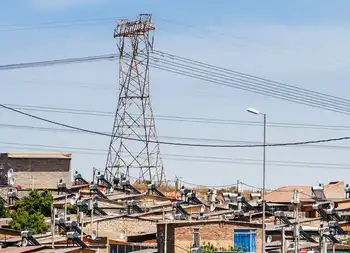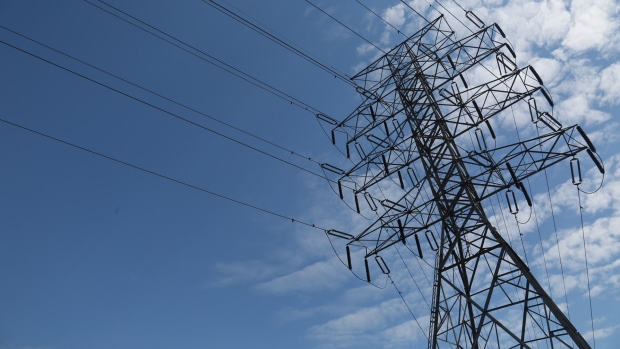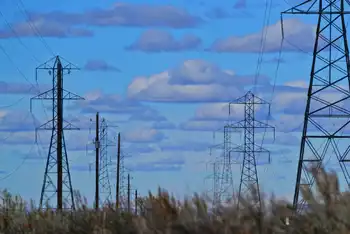Falling oil is cooling the appeal of solar energy for now, but advocates continue to believe in its long-term appeal
LONDON, ENGLAND - With oil prices down about 20 percent from the mid-July peak, this hardly seems like the time to be thinking about alternative energy. On the other side of the coin, these stocks may be priced more favorably than they would be if oil were closer to $80 per barrel.
Indeed, solar cell makers Suntech Power Holdings Co. Ltd., SunPower Corp., Energy Conversion Devices Inc., and Evergreen Solar Inc. are now priced about 40, 35, 43, and 48 percent respectively below their 2006 highs.
For the time being, it would seem that the last thing in the world solar investors need is lower oil prices.
While observers laud the cleanliness and easy availability of sunlight as a power source, producing electricity from this source remains about 10 times as expensive as power generated from fossil fuels. Even solar bulls acknowledge that the industry today depends heavily on the fact that governments in some countries heavily subsidize this otherwise uneconomic energy source.
Adding fuel to the fire, so to speak, is the shortage of polysilicon, a key raw material used to produce photovoltaic (PV) cells that convert sunlight into electricity. This results from too much of a good thing, powerful growth in demand based on increasing use of solar energy. The downside is the increase in prices, something that inhibits solar from reaching cost efficiencies needed to flourish in a subsidy-free world and which exerts margin pressure on PV producers.
That said, advocates are keeping the faith.
For one thing, polysilicon capacity is on the rise and the current shortage is expected to be alleviated by 2008.
Moreover, while there is concern that subsidies will diminish in some places, such as Japan, the heaviest user of solar, incentive programs are holding or expanding elsewhere, such as in the United States, Germany, Italy, Spain and China, based on a reluctance to bet the farm on the indefinite sustainability of the recent oil price retreat.
No government is likely to subsidize solar forever, but industry observers expect further cost progress to occur, through more efficient production processes and innovations that increase the yield of PV cells (the amount of electricity that comes from a particular quantity of polysilicon). The aim is for solar to become more competitive with fossil fuels by about 2015.
Because solar energy caught on earlier in Japan, it comes as no surprise that the leading manufacturers of PV cells are based there: Sharp Corporation, Kyocera Corporation, Sanyo Electric Co. Ltd., and Mitsubishi Corp. The other major provider is Q-Cells, a German manufacturer.
U.S. investors seeking domestic plays will, likely, have to think small, not necessarily in terms of market capitalization — Suntech, SunPower, Energy Conversion Devices and Evergreen Solar all have market capitalizations above $1 billion while Evergreen Solar is just above $600 million — but in terms of market shares which, for each of these firm, is at low single-digit percentage levels.
The largest among these firms, Suntech, is well positioned in growth areas of Europe and in China, and it recently acquired its way into Japan. On the cost side, it counts on a sizable manufacturing capacity in China to keep operating costs under control and to enable it to use more manual effort than might be feasible elsewhere, thus keeping capital costs in check. It should comfortably cope with polysilicon supply issues as a result of its having signed a 10-year arrangement with producer MEMC Electronic Materials Inc.
Suntech and SunPower both make conventional PV cells. But the smaller SunPower may be of particular interest based on what Pierre Maccagno of Needham described in a July 19 research report as a conversion ratio, the amount of electricity that its the silicon on its panels yields, that is "the highest in the industry."
Meanwhile, estimates for Energy Conversion Devices may change, for the better. The stock was up more than 10 percent recently in response to the company's having reported a narrower-than-expected loss of $0.02 per share.
Beyond that, the stock may have appeal as it increases the extent of the solar play by, possibly, moving other operations to joint ventures or partnerships, and through its atypical approach to PV cells. Its thin-film product is based, not on polysilicon, but on stainless steel and polymers. Jeff Osborne of CIBC world Markets explained, in a July 13 research report, that this is positive because lighter weight makes for easier shipping and installation. The disadvantage lies in lower efficiency, meaning they are suitable only for structures with large roof surfaces, such as commercial buildings.
Evergreen Solar may be the company that poses the most challenge to investors right now. Paul Clegg of Natexis Bleichroeder explains in an Aug. 28 research note that analysts are finding it especially hard to forecast results as the company makes changes in accounting practices.
With uncertainty as to the pace of improved cost efficiency relative to fossil fuels and the sustainability of government subsidies, not to mention shortages and resulting price spikes in polysilicon, it's especially hard to value solar stocks right now based on earnings per share.
We evaluated a hypothetical market capitalization weighted portfolio consisting of Suntech, SunPower and Energy Conversion Devices and estimate that it would take a five-year annual sales-per-share growth rate of 28-30 percent for an investor to break even on these stocks. That's in line with the long-term growth-rate projections we're seeing from analysts and industry observers. Our valuation assumes that price-to-sales ratios will fall from a weighted average of 11.89 now (versus 2.7 for the S&P 500) to 5.5 in the future.
Those seeking to play solar via more mature companies could consider MEMC Electronic Materials, a major supplier of polysilicon, Cypress Semiconductor Corp., which owns about 87 percent of the equity of SunPower but also provides investors with exposure to conventional electronics businesses, or Applied Materials Inc., which just announced its entry into the PV cell manufacturing equipment business.
Related News

South Africa's Eskom could buy less power from wind farms during lockdown
JOHANNESBURG - South African state utility Eskom has told independent wind farms that it could buy less of their power in the coming days, as electricity demand has plummeted during a lockdown aimed at curbing the spread of the coronavirus.
Eskom, which is mired in a financial crisis and has struggled to keep the lights on in the past year, said on Tuesday that power demand had dropped by more than 7,500 megawatts since the lockdown started on Friday and that it had taken offline some of its own generators.
The utility supplements its generating capacity, which is mainly derived from coal,…




